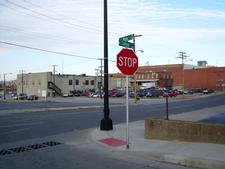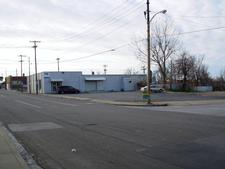Franz Sigel in Springfield
 Early Civil War events in Missouri occurred far from the Ozarks, but the turbulent times soon engulfed the relatively quiet region. St. Louis was the center of hostilities until Union General Nathaniel Lyon’s forces captured Jefferson City in June 1861. Union troops routed elements of the Missouri State Guard in the small Battle at Boonville on June 17. The Missourians fled towards the southwest corner of the state where they hoped to join forces with Confederate troops from Arkansas under General Benjamin McCulloch. Lyon quickly sent three columns of men to intercept them, an action that ultimately brought the war to Springfield.
Early Civil War events in Missouri occurred far from the Ozarks, but the turbulent times soon engulfed the relatively quiet region. St. Louis was the center of hostilities until Union General Nathaniel Lyon’s forces captured Jefferson City in June 1861. Union troops routed elements of the Missouri State Guard in the small Battle at Boonville on June 17. The Missourians fled towards the southwest corner of the state where they hoped to join forces with Confederate troops from Arkansas under General Benjamin McCulloch. Lyon quickly sent three columns of men to intercept them, an action that ultimately brought the war to Springfield.
The first Union troops to enter Greene County were led by Colonel Franz Sigel. His men were mostly German volunteers from St. Louis. They arrived in Springfield on Sunday, June 24, 1861. Many residents were attending services at the Christian Church under the direction of Reverend Charles Carleton. Carleton was a well known Southern sympathizer and his congregation included many secessionist families, including the Campbells, who were likely the best known Rebels in Greene County.
 The Federals quickly surrounded the Christian Church. Just as the morning services ended, a Union officer entered the chapel. One of the parishioners identified Confederate sympathizers in the congregation, a compelling example of how quickly the war turned neighbor against neighbor. All of the citizens were marched just up the street to the public square where the ladies were allowed to go home. The local jail was soon filled with men suspected of disloyalty, though it is doubtful many were active Rebels. Sigel also authorized his men to seize horses, mules and wagons, an order that some of his men abused. Though these items were desperately needed by the command, the seizure of private property and arrests at the Christian Church surely created some Confederate sympathizers in the largely pro-Union town. The prisoners were likely released upon taking an oath of allegiance to the United States.
The Federals quickly surrounded the Christian Church. Just as the morning services ended, a Union officer entered the chapel. One of the parishioners identified Confederate sympathizers in the congregation, a compelling example of how quickly the war turned neighbor against neighbor. All of the citizens were marched just up the street to the public square where the ladies were allowed to go home. The local jail was soon filled with men suspected of disloyalty, though it is doubtful many were active Rebels. Sigel also authorized his men to seize horses, mules and wagons, an order that some of his men abused. Though these items were desperately needed by the command, the seizure of private property and arrests at the Christian Church surely created some Confederate sympathizers in the largely pro-Union town. The prisoners were likely released upon taking an oath of allegiance to the United States.
Sigel’s troops resumed their pursuit of the Missouri State Guard. The two forces met in the Battle of Carthage on July 5. Sigel was defeated and his troops returned to Springfield where the rest of Lyon’s army joined them. The campaign culminated with Lyon’s death at the Battle of Wilson’s Creek on August 10. Southern forces occupied Springfield after their victory as the Union army retreated to Rolla.
The Christian Church was located on the Northwest corner of College and Main streets. The photographs show that area today. For more information on the Christian Church and the Civil War experiences of the Campbell family, see Confederate Girlhoods which is available to check out or for purchase at the Library Center Local History Department.
Find this article at http://thelibrary.org/blogs/article.cfm?aid=1439&lid=62